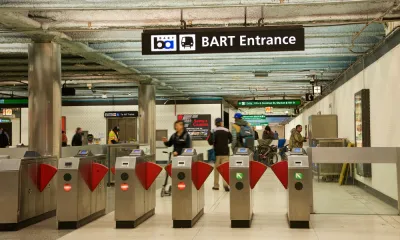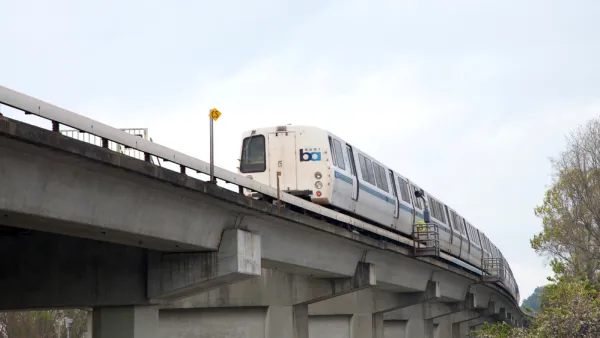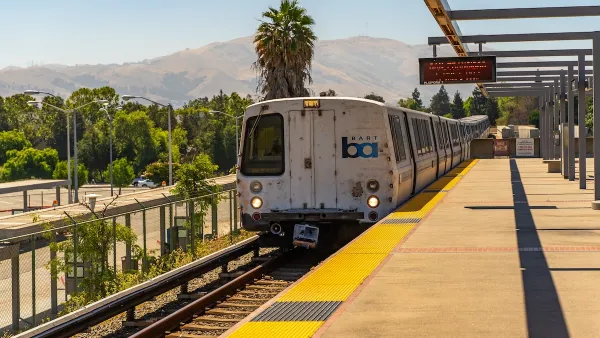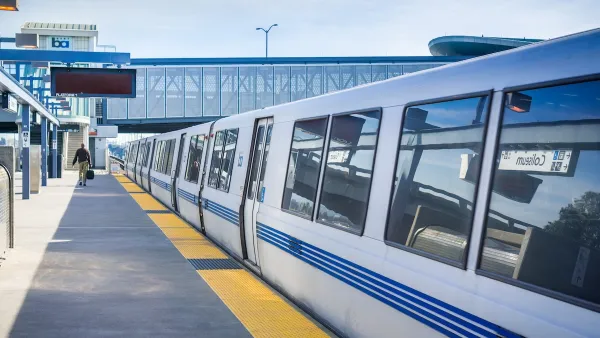Bay Area transit agencies employ rigorous protocols to ensure they’re prepared for the next major earthquake.

Californians know they should always be ready for the next earthquake—and that includes the state’s transit systems. In the San Francisco Bay Area, when the Loma Prieta earthquake struck in 1989, the Bay Area Rapid Transit (BART) system persisted with minimal disruptions. Ricardo Cano of the San Francisco Chronicle explains how the system prepares for major earthquakes.
“BART’s earthquake early warning detection system alerts the system to pending quakes and automatically signals trains to slow down at higher seismic intensities,” Cano writes. “Following an earthquake, [BART spokesperson James Allison] said, BART trains will stop (except for trains in the Transbay Tube and Berkeley hills tunnel) until it is determined it is safe to move the train to the nearest station, where riders will get off. Trains in the tube or tunnel move to the nearest station and then hold.” Staff are also trained and retrained regularly to respond to various levels of intensity.
San Francisco’s other major transit agency, Muni, and the ferry operator, San Francisco Bay Ferry, have similar processes in place. “Like BART, Muni personnel would assess damages and inspect the system’s infrastructure to determine how soon Muni service could continue. Motor buses would replace electric trolley buses and streetcars if an earthquake damaged the system’s power lines.”
FULL STORY: How the Bay Area’s transit services prepare for the next big earthquake

National Parks Layoffs Will Cause Communities to Lose Billions
Thousands of essential park workers were laid off this week, just before the busy spring break season.

Retro-silient?: America’s First “Eco-burb,” The Woodlands Turns 50
A master-planned community north of Houston offers lessons on green infrastructure and resilient design, but falls short of its founder’s lofty affordability and walkability goals.

Delivering for America Plan Will Downgrade Mail Service in at Least 49.5 Percent of Zip Codes
Republican and Democrat lawmakers criticize the plan for its disproportionate negative impact on rural communities.

Test News Post 1
This is a summary

Test News Headline 46
Test for the image on the front page.

Balancing Bombs and Butterflies: How the National Guard Protects a Rare Species
The National Guard at Fort Indiantown Gap uses GIS technology and land management strategies to balance military training with conservation efforts, ensuring the survival of the rare eastern regal fritillary butterfly.
Urban Design for Planners 1: Software Tools
This six-course series explores essential urban design concepts using open source software and equips planners with the tools they need to participate fully in the urban design process.
Planning for Universal Design
Learn the tools for implementing Universal Design in planning regulations.
EMC Planning Group, Inc.
Planetizen
Planetizen
Mpact (formerly Rail~Volution)
Great Falls Development Authority, Inc.
HUDs Office of Policy Development and Research
NYU Wagner Graduate School of Public Service





























